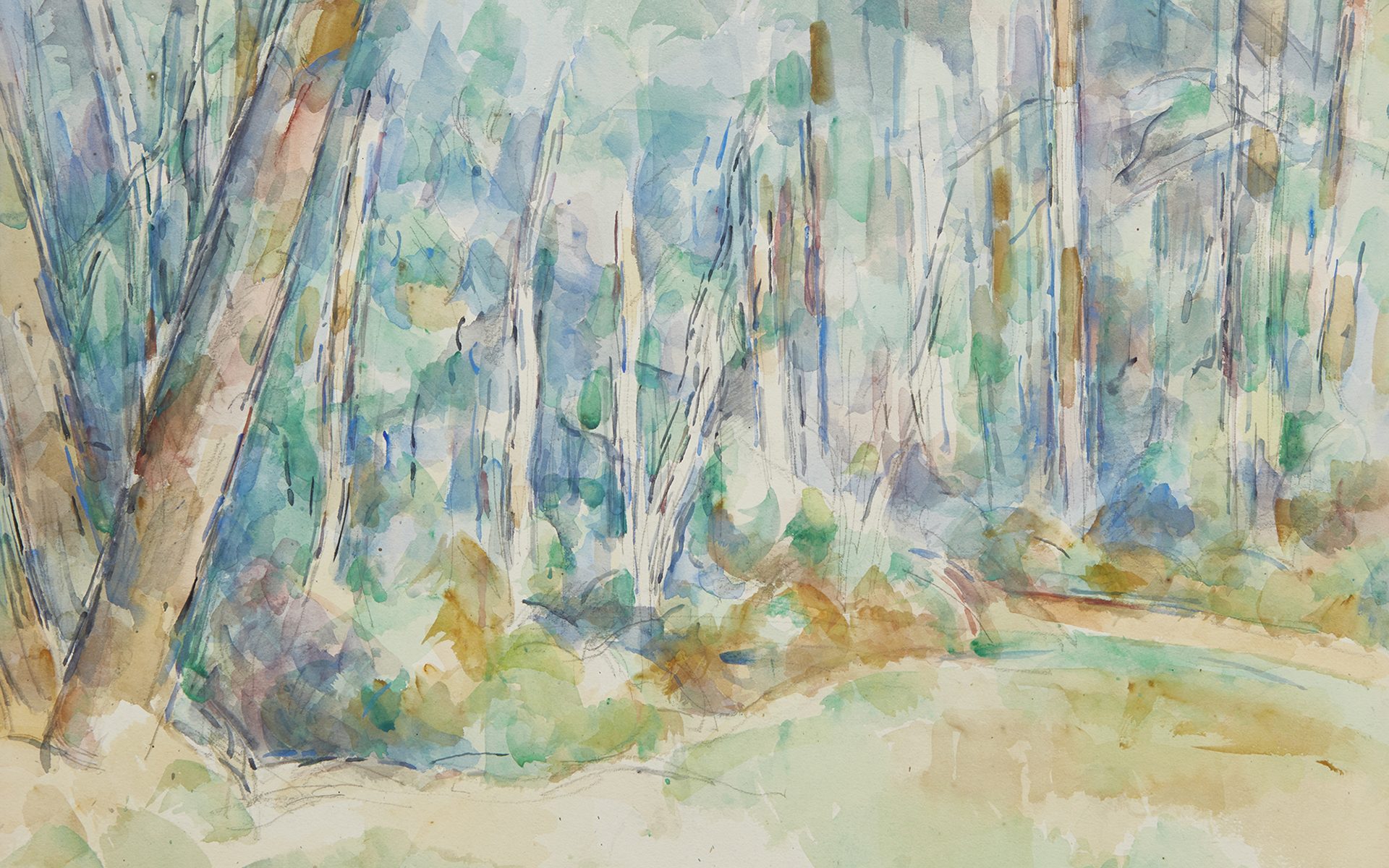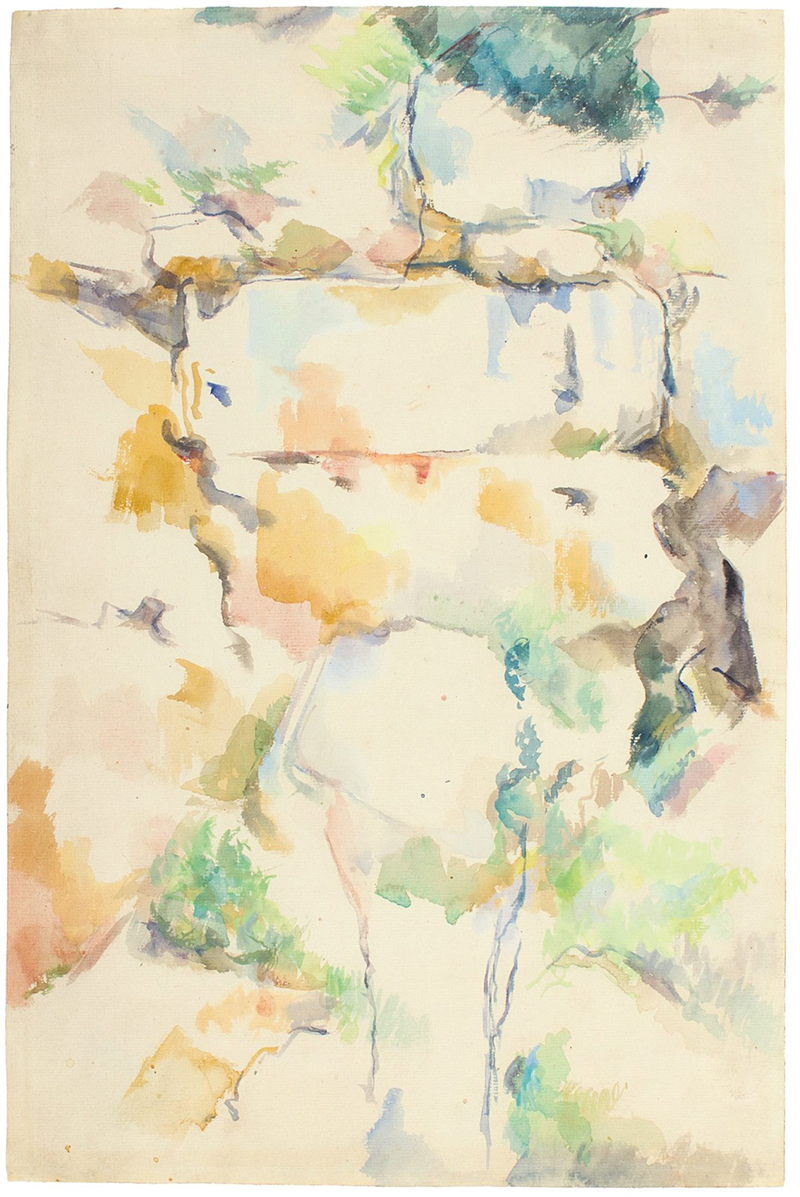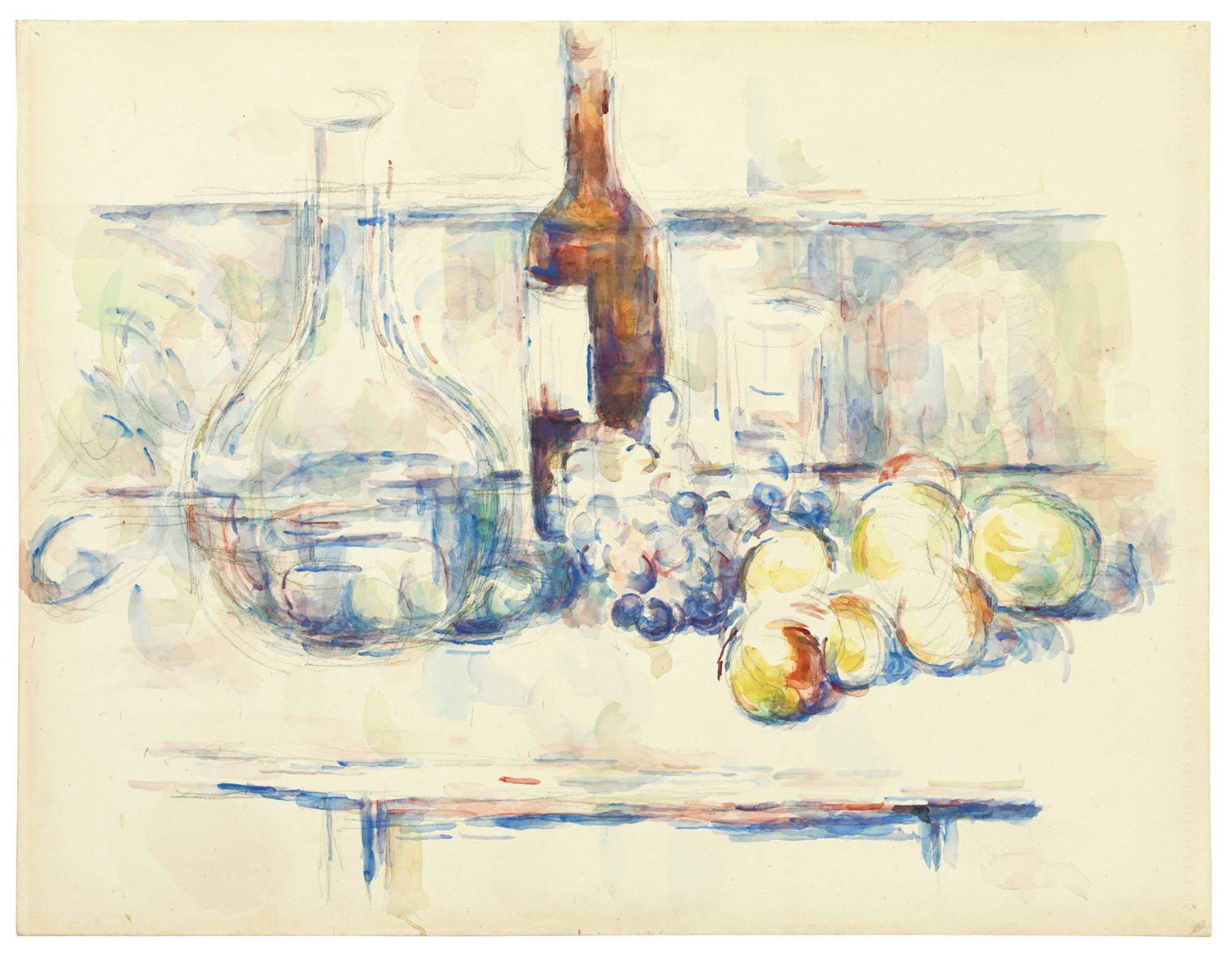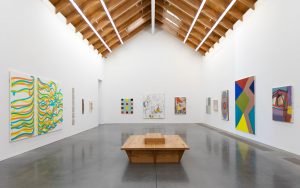

MoMA’s New Cézanne Exhibition Offers a Fascinating Look Inside the Artist’s Creative Mind
‘Cézanne Drawing’ brings together more than 250 drawings by the Impressionist master under one roof for the first time

Paul Cézanne. Rocks Near the Château Noir (Rochers près des grottes au-dessus de Château Noir). 1895-1900. Watercolor on paper. Photo: Courtesy of MoMA
When New York’s Museum of Modern Art when it opened its doors in 1929, Paul Cézanne, the so-called father of modern art, had 35 paintings in the inaugural exhibition. Presented alongside pieces by the Post-Impressionist artists Paul Gauguin, George Seurat and Vincent Van Gogh, his canvases were proclaimed revolutionary by Alfred Barr, the museum’s founding director and organizer of the prestigious show. Now—nearly 100 years later—MoMA curators are making the case that Cézanne was most experimental and radical when making his works on paper, through the compelling exhibition “Cézanne Drawing,” which runs through September 25, 2021.
The first major American presentation of drawings from across Cézanne’s entire career, the exhibition features more than 250 works on paper, including drawings, sketchbooks and rarely seen watercolors, combined with a related selection of paintings, assembled from MoMA’s collection as well as public and private collections worldwide. “Because these artworks are coming from all over the world and since they’re works that are often kept in study rooms and private homes, I can’t emphasize enough that this exhibition is really a unique, once-in-a-generation opportunity to see these things,” exhibition co-curator Jodi Hauptman declared on opening day.

Paul Cézanne. Still Life with Carafe, Bottle, and Fruit (La Bouteille de cognac). 1906. Pencil and watercolor on paper. Photo: Courtesy of MoMA.
The show starts with the artist’s study sheets, many of which are double sided and have multiple motifs across a single page. Serving as a key to his broader practice, the room holds some of his earliest works, including allegorical scenes of murder and rape based on the Old Masters, and sketches of the immediate things around him, such as his wife, child and everyday objects. Two self-portraits from 1880 are displayed side by side, with the rougher sketch belonging to the artist Jasper Johns, who lent a dozen drawings from his collection to the show, and the other, more refined version, which looks like a copy of the first one, lent by the Met. Another self-portrait humorously compares his bald head with an apple, a fruit that he repeatedly featured in his still lives and of which he aptly stated, “With an apple I will astonish Paris.”

Paul Cézanne, Hortense Fiquet (Madame CŽzanne) sewing, c.1880, Pencil. Photo: Courtesy of MoMA
From the second room onward, the exhibition isolates the artist’s most recognizable motifs. Exquisite drawings made after sculptures at the Louvre, statuary at the Gardens of the Trocadero near the Eiffel Tower, and a plaster cast of a putto attributed to the French Baroque artist Pierre Puget lead into his studies of bathers and other firmly posed figures. Cézanne’s bathers weren’t based on live models rather his representations of them were composed from drawings that he had made from sculptures and paintings by past artists that he admired. Particularly telling is an anonymous photograph of a standing male model with his hands on his hips who appears to be the point of departure for a drawing in an open sketchbook nearby and his famous 1885 painting The Bather, which entered MoMA’s collection through the patronage of Lillie P. Bliss, one of the museum’s three women founders.

Paul Cézanne. Bathers (Baigneurs). 1885–90. Watercolor and pencil on wove paper. Photo: Courtesy of MoMA
In a section dedicated to his portraiture, there is a whole wall offering engaging portraits of his wife, visualized in a variety of media, including pencil, watercolor and oil on canvas. The large-scale 1880 drawing Hortense Fiquet (Madame Cézanne) Sewing is especially notable for its abstract, almost conceptual nature. It plainly portrays his seated wife looking downward at something she’s stitching, yet there are no sewing needles nor evidence of any fabric being mended—instead we see the exposed art paper on which she fictitiously exists. Another nearby drawing also toys with abstraction, as do several others that surround it. Capturing a coat that’s been thrown on a chair, Cézanne employs scrawled pencil lines and watercolor shading to turn the twisting drapery folds into a mountainous landscape, a portrait of a missing person and a still life, all at once.
After a gallery intriguingly exploring the artist’s materials and methods, the exhibition expands into rooms richly occupied by the artist’s magical still lives and lush landscapes—one painted in the isolation of the studio, where he had plenty of time since he was financially well-off yet artistically underappreciated until later in life, and the other realized “en plein air,” or outside, where his friend and mentor Camille Pissarro first encouraged him to paint and which became his greatest challenge and delight.

An installation view of "Cézanne Drawing" at MoMA. Photo: Courtesy of the Museum of Modern Art
Highlights here include Three Pears, a powerful pencil and watercolor drawing from the late-1880s that was coveted by both Degas and Renoir when it was exhibited in Cézanne’s first solo show in 1895; Still Life with Carafe, Bottle, and Fruit, from 1906, the last year of his life, that shows how the artist literally constructed his images with a build-up of lines and brushstrokes until they begin to reflect a reality; Mont Sainte-Victoire, a 1902-06 version of the Provence landscape Cézanne grew up around and returned to for renewal; and The Bridge of Trois-Sautets, a haunting 1906 pencil and watercolor of which he wrote to his son of his desire to “convey as much rapport as possible,” and succeeded in doing.

Paul Cézanne, Coat on a Chair (Veste sur une chaise), 1890-92, pencil and watercolor on laid paper. Photo: Courtesy of MoMA
A suite of four portraits amongst the landscapes of Cézanne’s gardener, from 1904-06, adds a reminder of the artist’s love of returning to the same subjects with close examination while simultaneously looking for a new way to express what he already had conveyed, which is what made him modern, or as Alfred Barr rightly described him, “a bridge between the art of his predecessors and the art of his successors.”

Paul Cézanne, Mont Sainte-Victoire (La Montagne Sainte-Victoire vue des Lauves), 1902–06. Photo: Courtesy of MoMA
“Cézanne Drawing,” is on view at the Museum of Modern Art New York through September 25, 2021.







